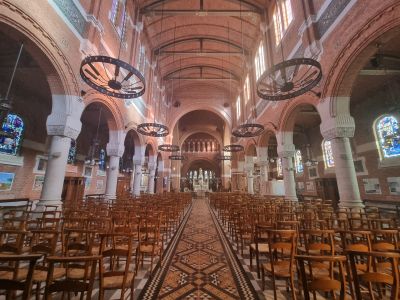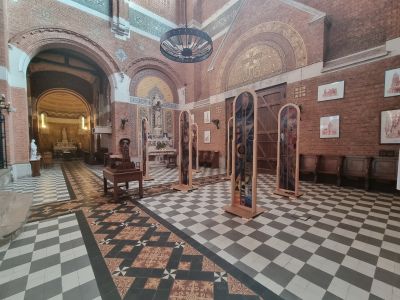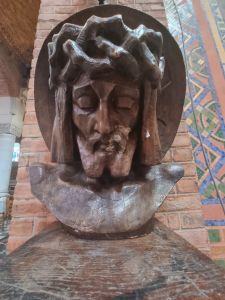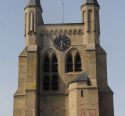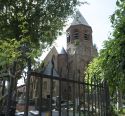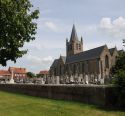Church | 1924-1932 | Other, Neoromanesque , Byzantine style | Catholic Church




Map
Opening hours
01 January - 31 December
Mon 8.30 - 17.30
Tue 8.30 - 17.30
Wed 8.30 - 17.30
Thu 8.30 - 17.30
Fri 8.30 - 17.30
Sat 8.30 - 17.30
Sun 8.30 - 17.30
Religious offices
Description
Totally destroyed by the Allies during the First World War, it was rebuilt in a neo-Flemish style, inspired by Bruges, under the direction of architect Louis-Marie Cordonnier.
With his son, Louis-Stanislas Cordonnier, he undertook the reconstruction of the church of Saint-Vaast, located behind the belfry and the Town Hall, replacing the former sixteenth-century hallekerque church.
Inaugurated in 1932, the new church features a blend of neo-Romanesque and neo-Byzantine styles, typical of Cordonnier's Reconstruction buildings, such as the churches in Béthune and Merville.
As they pass through the doorway, visitors are greeted by a Christ the Pantocrator (Christ the King) sculpted on the tympanum, before discovering an interior where the Art Deco style makes its presence felt.
Photos
Remarkable elements
The stained glass windows
The painter Charles Hollart and the master glassworker Tambouret from Amiens created 23 historiated stained glass windows, which were restored in 1956 after their destruction in 1940. The 14 windows in the nave illustrate the religious and civil history of Bailleul, while the 9 windows in the choir retrace the history of the Saint-Antoine Commandery.
The high altar
Designed by Camille Deberdt, the high altar is rich in symbolism. The antependium depicts two peacocks drinking from the Eucharistic cup, symbols of eternal life. The bronze medallions illustrate scenes from the Gospel (Nativity, Epiphany, Palm Sunday, etc.). It is framed by the statues of Saint Vaast, holding a church, and Saint Leonard, identifiable by his chains. The ensemble is surmounted by a 1.80-metre gilded bronze Christ the King.
The guild gate
On the south side of the square, the Guild Portal is dedicated to Mary. At its feet are two dates: 1096, the year the church was first built, and 1932, the year it was rebuilt. The mandorla of the Virgin is surrounded by the coats of arms of the guilds that made Bailleul prosperous: brewers, crossbowmen from Saint-Georges, lacemakers, clothmakers, weavers, etc.
Little paradise
Created in 2021, this space brings together the statues of saints from the church, including Notre-Dame-du-Fief, patron saint of the town and parish. The current statue, a post-war copy, recalls a 13th-century tradition: Baudoin, Lord of Bailleul, vowed to erect a chapel in honour of the Virgin if he returned alive from the Crusades. The Notre-Dame-du-Fief chapel is on the Route d'Hazebrouck and hosts an annual novena from 21 to 29 September.
Het orgel
Praised by Luis Vierne (1870-1937), organist of Notre-Dame de Paris, who described it as an instrument with ‘infinite variations of colour [...] of which the town of Bailleul has the right to be proud’, the Bailleul organ was inaugurated in 1932. Designed by Victor Gonzalez, it has 2,372 pipes made of copper, wood and spotted (an alloy of lead and tin), and 33 stops controlled by 39 drawstops. The case, designed by architect Louis-Marie Cordonnier, was built by Maison Buisine in Lille.
The Stations of the Cross and confessionals
The Way of the Cross, designed by Charles Hollart, a drawing teacher at the Bailleul academic school, illustrates the Passion of Christ in sober colours. Below, the confessionals, a remarkable piece of liturgical furniture, are inspired by ancient Egypt, adding an eclectic touch to the church.







